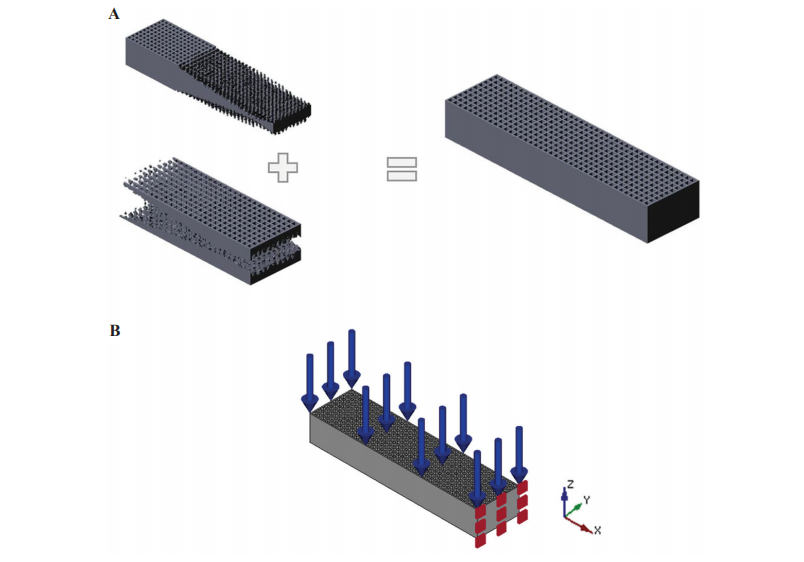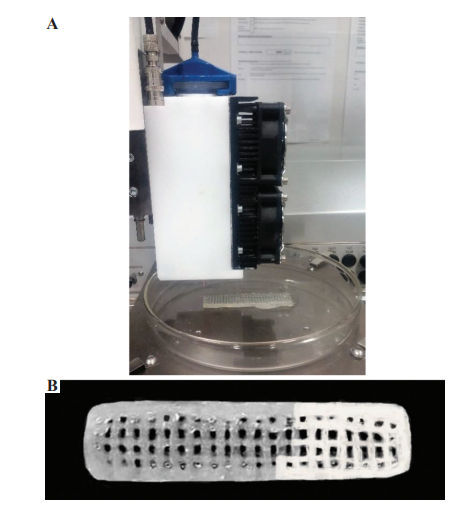In the recently published ‘Effects of Topology Optimization in Multimaterial 3D Bioprinting of Soft Actuators,’ international researchers delve further into the fabrication of soft robotics, bordering on the 4D as they look for ways to develop improved polymers able to respond to outer stimuli.
3D printing and robotics are common partners these days, whether researchers are refining tools like grippers, developing new frameworks, or creating ultra-programmable robotics. The authors point out that production of robotics is easier thanks to digital fabrication, and especially as parts can be created in one single piece without requiring arduous assembly later. Researchers are also beginning to rely more on 4D printing of materials that can deform and then return back to their initial shape:
“The recent proliferation of four-dimensional-printed soft robots stems from both developments in the additive manufacturing and research in responsive materials.”
In this study, the authors focused on actuation performance, employing finite element analysis (FEA) and topology optimization (TO) for better design to also transfer to other soft robotic systems.

Computer-aided design models of the actuators (A) two-material three-dimensional printing, (B) mechanical forces and boundary constraints
“The TO modeling for the soft actuator was based on the [solid isotropic material with penalization] SIMP approach and the design goal set to minimum strain energy or maximum stiffness with optimal structural configuration. To control the actuator stiffness and the optimization convergence, a volume constraint was set,” stated the researchers.
The team used two materials for fabricating the optimized lattice, creating boundaries based on a cantilever beam with distributed force.
While numerous other techniques have been explored regarding hydrogels, in this study the researchers relied on the liquid hardening method for chitosan hydrogel. The 3D printed pastes varied in molecular weight as well as concentrations.
Efficiency of the two-material TO was displayed as the research team performed numerous experiments, finding that the multi-material approach resulted in better bending performance.
“The main cause of smaller bending amplitude in our sample is attributed to the characteristic of polyelectrolyte hydrogel actuators that are highly dependent on electrical stimulus and once the input signal is turned off, there is a back relaxation in bending,” stated the researchers. The lack of 3D printing fidelity for certain extrudate systems may reduce the improvement predicted by TO mainly due to the open loop process of 3D printing. In the current systems, there is no feedback control on the printing process parameters to compensate for uncertainties during 3D printing. The lack of precise control in factors such as ambient temperature, moisture, and instrument vibrations could lead to imperfect representation of the TO model. Further, research in optimizing the 3D printing of stimuli-responsive hydrogels in conjunction with TO could result in significant functionality enhancement of bioprinted actuators.
“The results demonstrate the efficacy of multimaterial TO-based design to bring about the full potential of the performance of bioprinted soft actuators,” concluded the researchers.
What do you think of this news? Let us know your thoughts! Join the discussion of this and other 3D printing topics at 3DPrintBoard.com.
[Source / Images: ‘Effects of Topology Optimization in Multimaterial 3D Bioprinting of Soft Actuators’]Subscribe to Our Email Newsletter
Stay up-to-date on all the latest news from the 3D printing industry and receive information and offers from third party vendors.
You May Also Like
3D Printing Unpeeled: New Arkema Material for HP, Saddle and Macro MEMS
A new Arkema material for MJF is said to reduce costs per part by up to 25% and have an 85% reusability ratio. HP 3D HR PA 12 S has been...
3D Printing News Briefs, January 20, 2024: FDM, LPBF, Underwater 3D Printer, Racing, & More
We’re starting off with a process certification in today’s 3D Printing News Briefs, and then moving on to research about solute trapping, laser powder bed fusion, and then moving on...
3D Printing Webinar and Event Roundup: December 3, 2023
We’ve got plenty of events and webinars coming up for you this week! Quickparts is having a Manufacturing Roadshow, America Makes is holding a Member Town Hall, Stratafest makes two...
Formnext 2023 Day Three: Slam Dunk
I’m high—high on trade show. I’ve met numerous new faces and reconnected with old friends, creating an absolutely wonderful atmosphere. The excitement is palpable over several emerging developments. The high...


































